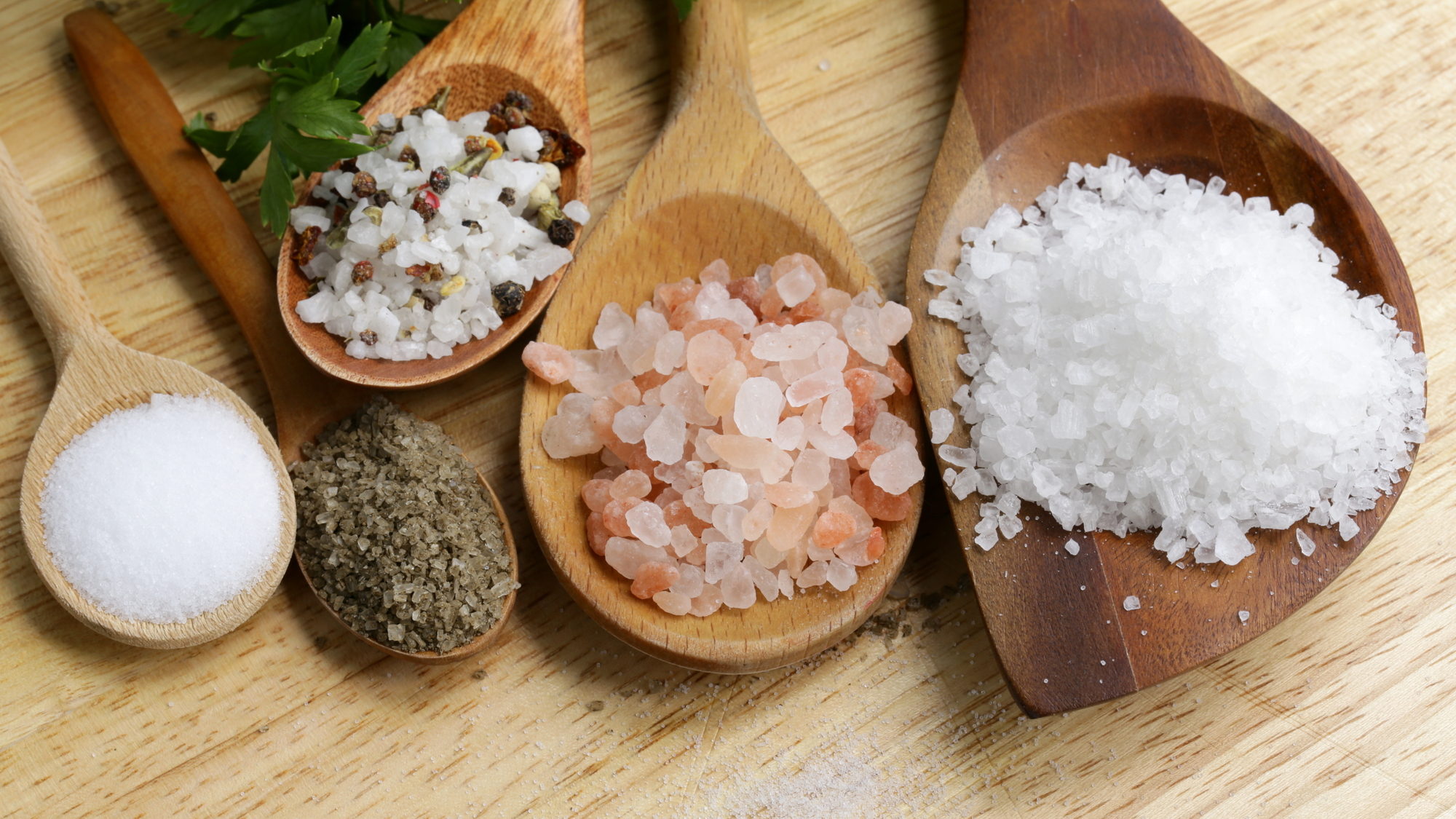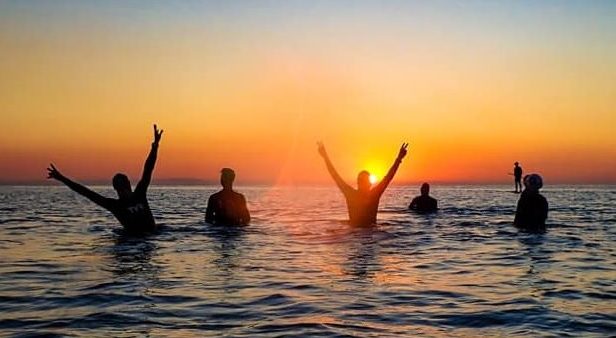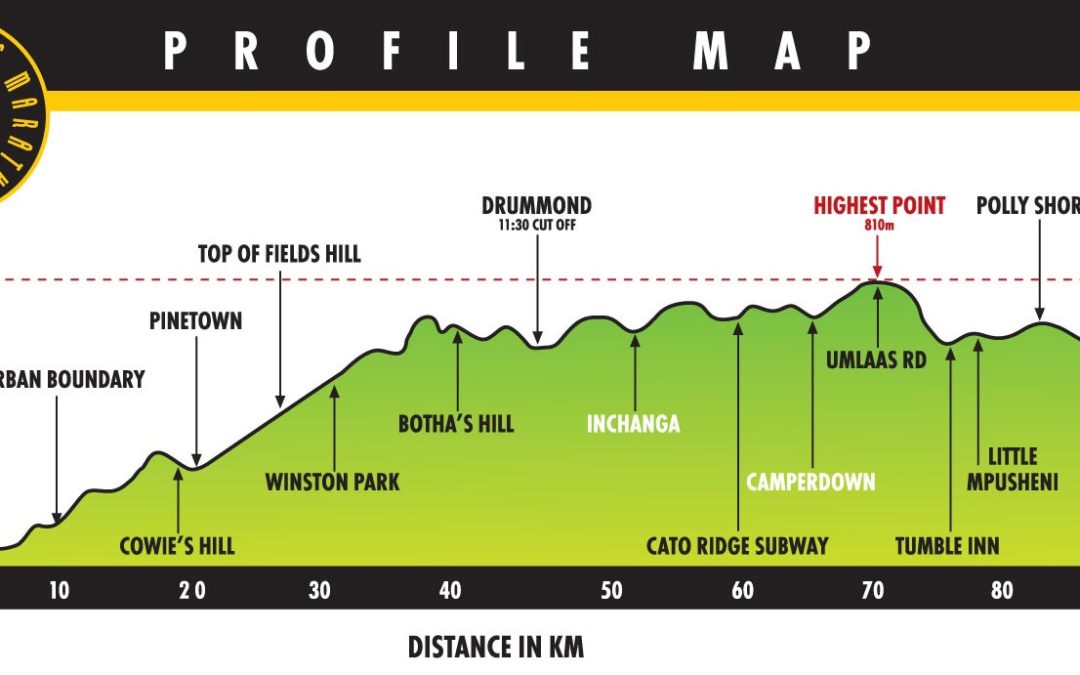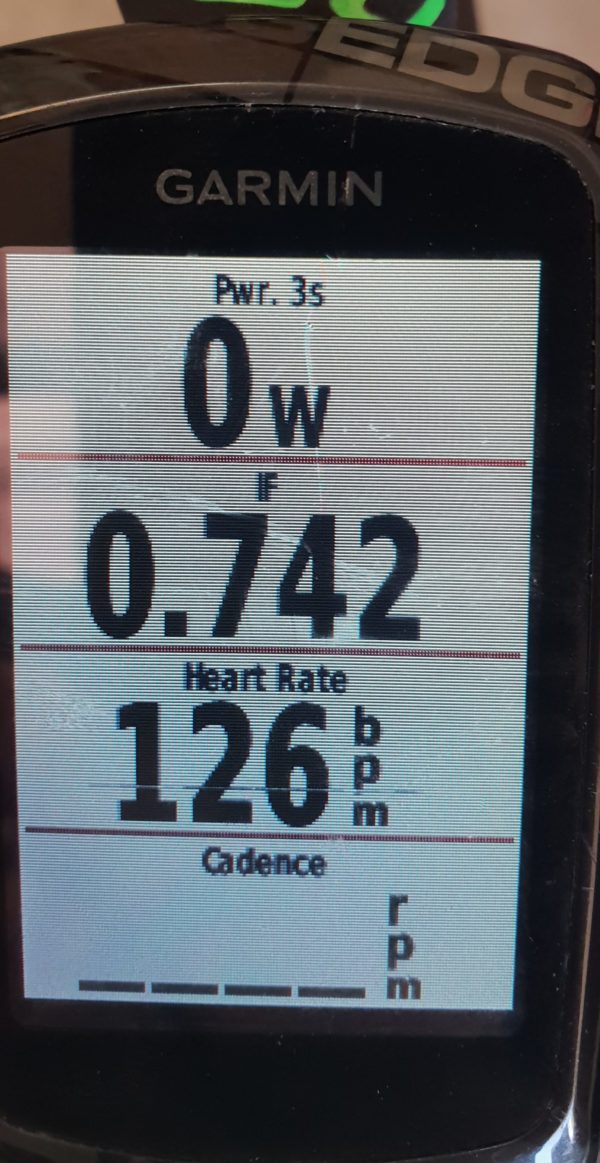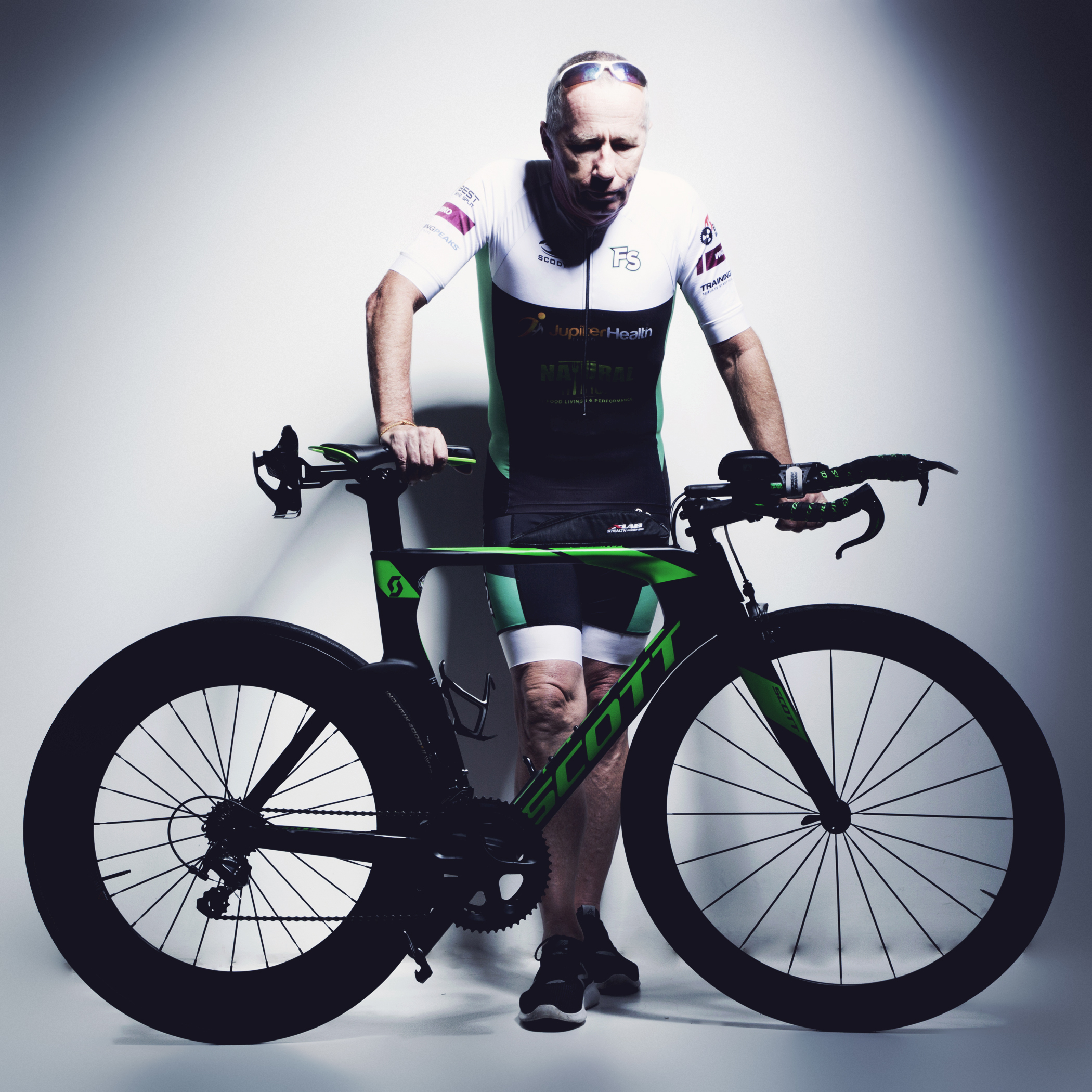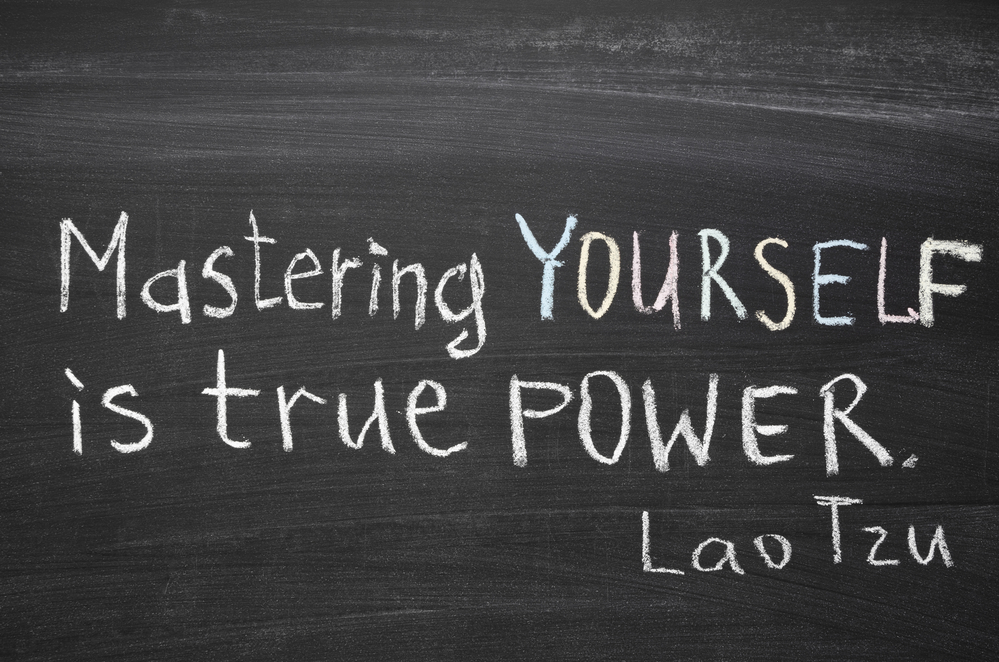“The race that should not have happened”
The Race
Comrades was a significant Bucket List race for me having grown up watching it every year, always in awe anyone who dared to try. As a youngster I saw it as one for the crazy or elite, totally out of reach for mere mortals like me.
The race is iconic, the first of the famous ultras, the biggest, the “must do” road ultra on the world wide circuit. This year 19100 attempted the Up Run, 16500 finished within the 12 hour cut-off. 1800 m elevation gain over 87 km between Durban and Pietermaritzburg.
All who enter must qualify with a sub 4:50 marathon. Your are ceded in blocks at the start line according to your qualifying time, however your time starts on the cannon fire, not when you cross the start. It is a hard finish 12 hours later at the sound of the finish gun, no compromise, 1 meter short, no medal.
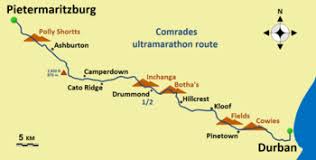
My Back Story
I qualified at Ironman New Zealand which placed me in the first third of the start, a perfect start to my campaign. Immediately after qualifying I came down with a tooth infection which necessitated antibiotics. I cut down on training, however it is never a good idea to train under medication and in one short run I developed Achilles tendinitis in both legs. Recovery was slow and effectively stopped any running from late March through to early May, 7 weeks out. With the race being on the 9th of June it gave me 5 weeks to prepare. No time to build up to the mileage required for a standard ultra, never mind the grueling Comrade up run. After two weeks attempting to build volume I called it, it just wasn’t happening. I advised my support crew I might start, but only do the first half as my maximum distance long run I could cope with was 21 km. From that point I ran frequent 10 kms and the odd 15 km for the three weeks up to race day, my biggest week totaling 55 kms.
Race Week
I arrived in Durban on Wednesday evening before the Sunday race. Primarily a family visit, looking forward to spending quality time with Mom, sister Shirley and nephew Nick. Comrades was now to be a 43.5 km fun run. On Thursday we drove the first half of the course. It was daunting, uphill all the way, and the named hills only called out as the incline was a bit steeper! Over the prior 6 months I had been doing a lot of research on mindset, including “Can’t hurt me” by David Goggins and “Endure” by Alex Hutchinson. With the inspiration of the course I changed my goal from running to half way, to run as far as I can. Still not giving myself a real chance of finishing, but I saw an opportunity to test my mindset. All the athletes I was communicating with were comparing their long runs of 50 to 60 km in training. My poultry 21km was met with the suggestion of a withdrawal every time from anyone you had run before. I chose the Goggins approach, “let’s not watch the race wondering, what if”. Going into race day my support crew, Sister Shirley and Nephew Nick, nor I knew how it would play out.
Race Morning
19100 athletes chanting Shozaloza, followed by Chariots of Fire will inspire everyone. I was at the start feeling like an imposter, a fraud, undeserving. I had no right to be here, I qualified but was clearly not prepared. I could have folded right there, but chose to commit and earn the right of passage on race day. For the first time in two months I was committed. The gun fired and we were off, well not really, with 19100 queued up we stood for a while, walked for a while and after 3 minutes crossed the line with a slow jog.
The Plan
- Race Intensity: HR 135 to 145 bpm
- Fuel to 62km: super starch and vegetable baby food. Salt tablets
- Fuel last 25km: Coke, Caffeine
- Hills: Run/walk Cowies, Fields, Botha’s and Inchanga. Walk Polly Shortts.
- Fold: Only when a clear muscle or connective tissue failure is imminent.
- Race Mantra: Run like a girl, walk like a man.
The Start – 0 to 34 Km
It was a cool day, but recent rain had notched up the famous Durban humidity to 90%. It was stifling, sweat rate and heart rate shot up and I was in to 150+ BPM on the first incline up to Tollgate, even at 7:00 min / km. I slowed to get the HR down but it was simply too slow. It would be 16 hours plus at that pace. I switch off the HR alert I never looked at it again. The first 2 the 5 named hills are in the first 34km, these being Cowies and Fields hills. All went to pace plan. I met my crew at Pinetown and Assagai ahead of plan, restocking with Ucan super starch and baby food sachets. Up to 30km I felt surprisingly good, no niggles, good energy and rhythm. At 30 km, as expected, the legs started tightening up, the discomfort began. I was ready for this, absorbed it, made it my new normal and continued. Pace was 7:04 / km.
The Beginning – 34 to half way (43.5)
This segment starts with the 3rd named hill, Botha’s hill. A 3km climb not dissimilar to our Mt Mee, followed by rolling, but mostly inclines through to half way. At this point I had run further than any time in the last 3 months and the legs felt it. The inflammation started, upgrading from discomfort to a clear and definite ache. I still managed to walk/run the hills and maintained a 7:30 pace. The course was noticeably still climbing after 5 hours of running. I arrived at halfway clearly suffering. My crew was there waiting, saw my suffering and were expecting me to pull up. I grabbed my baby food, Ucan and trotted on yelling, “See you at Cato Ridge”. The call came back, “Nope, too much traffic, see you at Camperdown”. I rolled on thinking sh#t that is 20km away!
The Grind – Inchanga to Umlaas road
Inchanga was hell! Not the steepest but the longest climb, I walked most of it celebrating the top as “apparently” the course stopped climbing. They are telling fibs! It’s all rolling hills! By now the downs hurt as much as the ups due to the jarring on tired legs! I rolled past the 50km acknowledging that this was the furthest I had ever run, with 37 to go! At Cato Ridge I was still hoping to see my crew, but alas they were not there. In hindsight a good thing. I was at my lowest morale for the day, sore, broken, 37km seeming too far to go! I may have folded had they been there. Next was the 35 Km to go marker. I yelled out “Hey guys, only 7 park runs to go” which was met with some laughs and some groans. It was the turnaround for me. Suddenly I was counting down, small bites, 1 km at a time. By the time I reached Umlaas road, the highest point of the course, I was in a new place I have never been before, hurting like hell, but very positive, no guaranteed finish but knowing I had reached a level of endurance I have never reached before. Onwards and upwards!
At Umlaas road, Nick appeared at the side of the road like an Angel! I was out of baby food and Ucan, I stocked up and confirmed I was going to tame this monster. I trudged on. At 28 km a new dilemma hit me. Suddenly I could not calculate the required pace to beat the cut off. It should have been easy [(hours x 60 + min) / km]. I just could not do it. I realised mental fatigue was creeping in. Since 30km it had been all mental, now that was fading! So far I had no sugar at all, just super starch, veggie baby food sachets, and salt tablets. Time for a change!
Survival – Umlaas road to Polly Shortts
Umlaas road is the highest point of the course, so from here, for the first time in the race the average incline was down, just the big bumps of Little Polly’s and Polly Shortts. At 25km to go I switched to cola and caffeine. A swig of coke at each aid station and an occasional Revvie (caffeine strip). My pace calculation started happening again and I found myself with some room to spare provided no catastrophe occurred. I was acutely aware I had been absorbing significant discomfort for the last 35km so something could give at any time. The body was on the edge but the mind was good. I rolled along at 8:30 average walking the hills, it was no longer “run like a girl, walk like a man”, but keep moving forward like an 80 year old unic!
At this stage runners were falling like flies, either throwing up from nutrition overload or cramping. I arrived at the last of the big 5, Polly Shortts and decided to walk, I calculated that a slow jog on the other side would secure a finish with 20 min to spare. Once over the top everyone was high fiving, celebrating that a finish was in the bag. Unfortunately for me, my legs were pretty much cooked, no celebration until the end. This journey was not done.
The last hurrah
After Polly’s it was 8 km of mostly down hill, Nick and Shirley were at 6 km. Seeing my state they asked if I was going to make it. I faked a hell yeah, no worries and suggested they stopped by the bottelo for champagne. I jogged on, counting down, 1 park run, 3 km, 2 km with 40 min to go, then suddenly found myself in the finish chute.
I can honestly say it was the most satisfying and enjoyable finish of all my races. All others races were about achieving a time, this was about achieving a life goal and finishing against the odds. I crossed the line knowing that I have never dug as deep, achieving the “impossible”.
Finished 11:24
The Comrades medal is the smallest I have ever received. They have not changed it in 94 years. But to me it is the biggest and will take its place front and centre on my medal hanger.
A big thank you to Shirley and Nick, my support crew. A tough gig on a chaotic day. You both did awesome making the right decisions on a volatile day! Thank you to all the others sending supportive messages, many with more confidence than I that I would get it done. Mair for all the love, support and constant motivation and unwavering belief.
Bucket List Done! Now what’s next?
